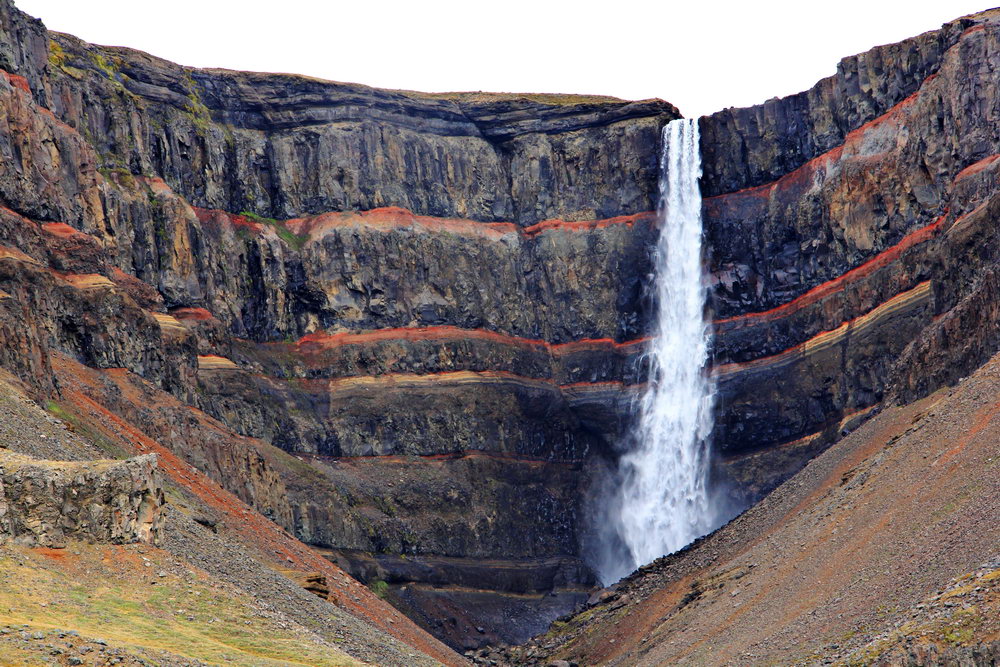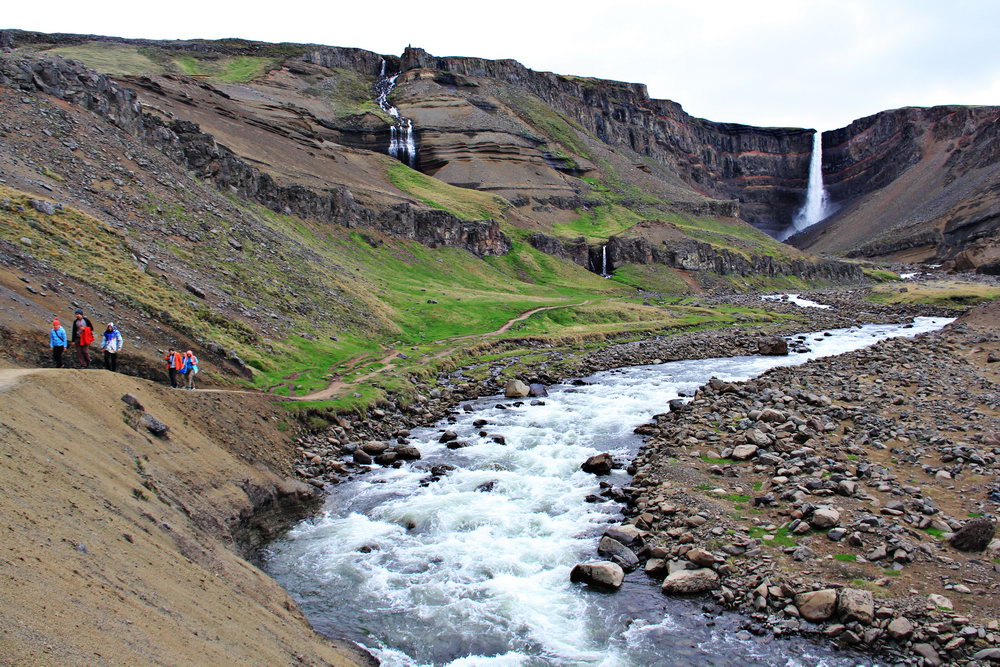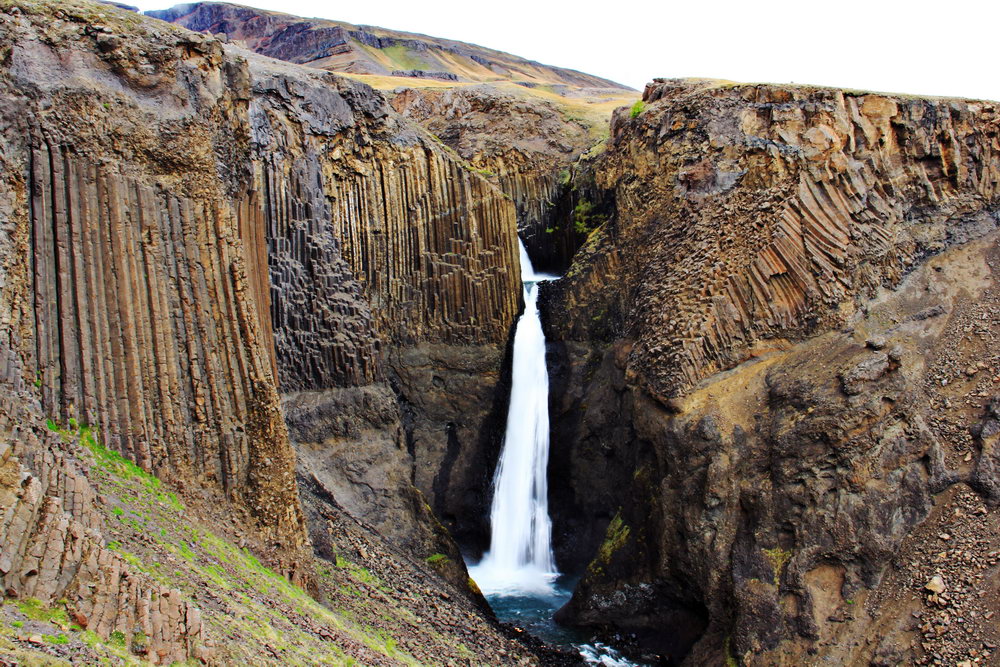Hengifoss Waterfall is considered the second highest waterfall in Iceland. It falls along well-visible rocks, with bright stripes of different colors.
Littlanesfoss is one of the most unusual waterfalls not only in Iceland, but also in the whole world. It is surrounded by columns of geometrically regular basalt. It's hard to believe that such a fabulous landscape could have been formed without human intervention. But in fact, this is the result of the work of various forces of nature and the laws of physics.
Content:
Waterfalls on the Lagarflout River
The Lagarfljot River is not the deepest and is not the largest in length in Iceland. There are about ten similar rivers on the island. The river originates from the lake of the same name. Falling off the rocks, the river forms the Hengifoss waterfall. And a little downstream there is another waterfall - Litlanesfoss.
Hengifoss Waterfall
Hengifoss Waterfall is considered the second highest waterfall in the country. Hengifoss is noticeably different from other waterfalls in Iceland. Firstly, it is quite high - 120 meters, and secondly, it falls along well-visible ledges, with clearly visible colored stripes.
Hengifoss is also called the "big striped waterfall", the ledges along which an almost 120 meter jet of water falls are striped and bright. The red rings resemble annual rings on a tree cut.
The black stripes are solidified lava that overflowed during volcanic eruptions. For thousands of years, clay and fertile soil have been growing on it. Under the influence of oxygen from the air, the metals contained in the soil are oxidized (rust) and turn red. Then, during the next volcanic eruption, this layer was covered with a new layer of lava.
Counting the red rings, you can see that 120 meters of the mountain, which forms a waterfall, were layered during 6 eruptions.
Another feature of Hengifoss Waterfall is that its water falls upwards, not downwards. Anyway, looking at it, you get the feeling that the waterfall goes up into the sky.The directions and strength of the winds are such that the water does not reach the foot, it is picked up by the wind and lifted up, spraying millions of small drops.
You can see how to get to the waterfall on the map below.
From the parking lot to the waterfall, you need to walk along the trail for about 40-60 minutes. The path rises quite steeply, but the path is well made and the hike does not cause any special difficulties. Sometimes the path to the very foot of the waterfall is closed due to landslides.
Litlanesfoss Waterfall
Litlanesfoss Waterfall is one of the most beautiful waterfalls in Iceland, located just a kilometer from another popular waterfall called Hengifoss. It is slightly smaller in size, but it is not inferior in its beauty, and in some ways even surpasses its counterpart located upstream of the same river. Today, Litlanesfoss Waterfall and its surroundings are considered a real miracle of nature, and every year tens of thousands of tourists from all over the world come to see it.
Litlanesfoss differs from others in that the water falls among hexagonal basalt pillars, which is rare even for Iceland. The grandeur of such a composition, combined with the growth of polar moss on the surface of these pillars and the rapidly falling water, creates a picture of unique beauty that inspires photographers and artists. For many years, the waters of the Lagarflout River, together with the effects of wind and sunlight, have been doing their job, diligently drilling a deep gorge.
All the surrounding hills were formed by lava flows and ash, which over thousands of years of volcanic eruptions formed a layered pie here, overlapping each other. The river gradually erodes the looser layers, but the solid layers of basalt resist destruction more strongly.
And the basalt columns themselves in the form of hexagons owe their origin to the peculiarities of lava solidification. Under some conditions, a solid mass of lava begins to crack upon cooling, and as a result, columns of almost regular shape with six faces are obtained.
There is an asphalt road almost all the way to the parking lot, and you don't need a four-wheel drive car to get there.
From the parking lot, you need to walk up the trail for about 30-40 minutes. After Litlanesfoss Waterfall, the trail continues to Hengifoss Waterfall.
The exact position of the Litlanesfoss Waterfall can be found on the map:




